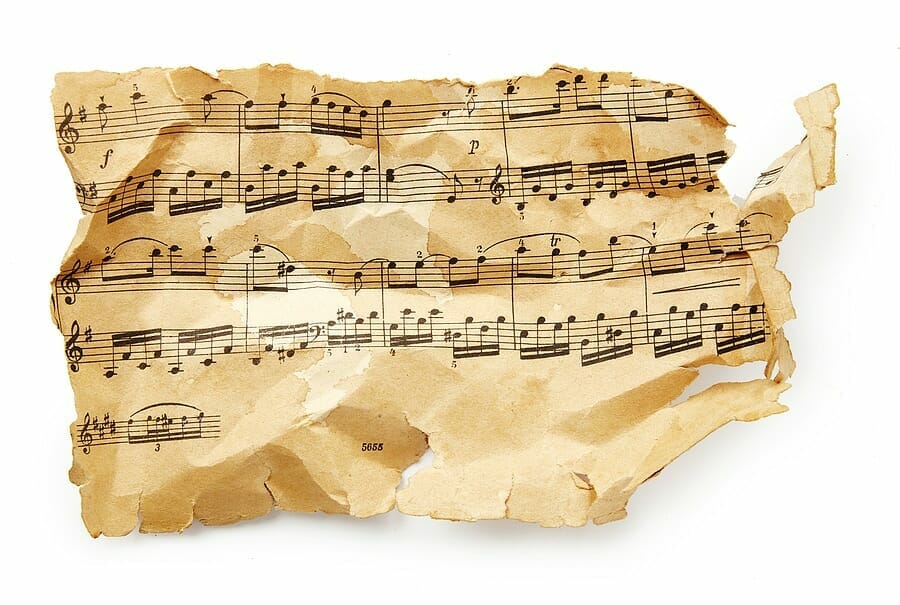Musical notation is a unique, versatile language which can capture the versatility and magic of nearly every instrument it is possible to play.

Whilst modern notation systems date back to 11th Century Catholic monasteries, which forms the basis of modern music score printing, the history of humankind writing down songs dates back thousands of years further.
Exactly how far back has yet to be discovered, but the first complete piece of sheet music dates back over 2500 years, to Ancient Greece.
When Man Discovered Music
Whilst it is most likely that any remains of the first-ever musician and musical instrument have long since decayed out of existence, the first known musical instruments were two flutes made over 42,000 years ago, out of bird bone and mammoth ivory.
At this point, we were a mere 35,000 years away from the first written languages, so for those intervening years music was passed along through an oral tradition of sharing ideas and copying from others. Unfortunately, this means any music before the invention of writing is lost to history.
Hymn To Nikkal
The first known form of musical notation is a stone tablet found in Ugarit, an ancient city in the north of Syria, dating back to around 1400BC.
The song itself, the Hurrian Hymn to Nikkal (Goddess of Orchards), is the earliest known musical score in the history of any significant size. Another 35 hymns were found in the same cuneiform writing (one of the earliest known writing systems, characterised by wedge-shaped impressions made on clay tablets) but the Hymn to Nikkal was the only one that survives relatively complete.
The way in which the notation system worked was that one tablet showed how to tune a Babylonian lyre, another referred to musical intervals, and the notation stone itself had both the lyrics and instruction for a singer and a nine-stringed lyre.
Interestingly, it was committed to stone at a time when Hurrian as a language was dying out, so it appears it was trying to preserve not only a divine song but a language which was precious to the hearts of people in the region, which should be kept for future generations.
Seikilos Epitaph
The oldest complete song, with lyrics and notation to be found, was inscribed on a tombstone in Turkey and dates back to some time between the 2nd Century BC and 2nd Century AD (most likely the latter).
The song, the Seikilos Epitaph, is a short composition, with most modern performances lasting around 42 seconds. However, it is complete, and surprisingly complex, with sections for both a harp and a recorder or flute-like instrument.
The notation appears above the lyrics, which talk about the briefness of life and the importance to shine and not to grieve, as well as a dedication by Seikilos to his wife (or perhaps the Muse of Music) Euterpe.
Interestingly Seikilos’ Epitaph has appeared in several other locations, most notably the computer games Civilisation V and a Greek Mythology Edition of Minecraft, both greatly expanding the original short melody into full-length musical tracks.
Click here to order sheet music printing.
Looking for a reliable printing company?
Get an instant quote
2 Comments
Is a moderator available to assist with my password change?
Could it be that I’m making an error?
Kindly provide guidance.
Thanks in advance.
Hello, please contact us on live chat- http://www.doxzoo.com or email [email protected] for assistance.